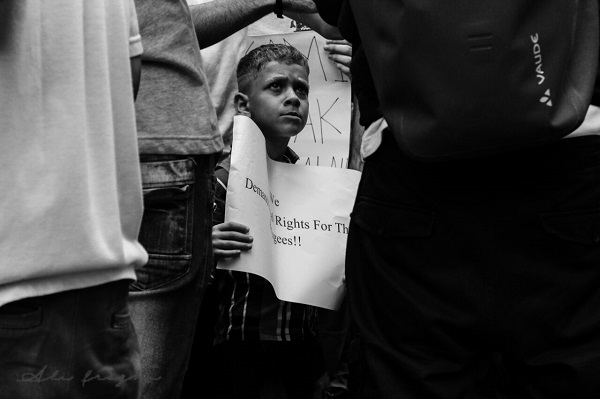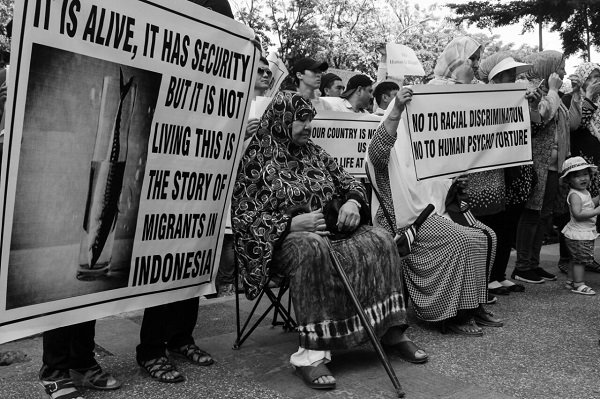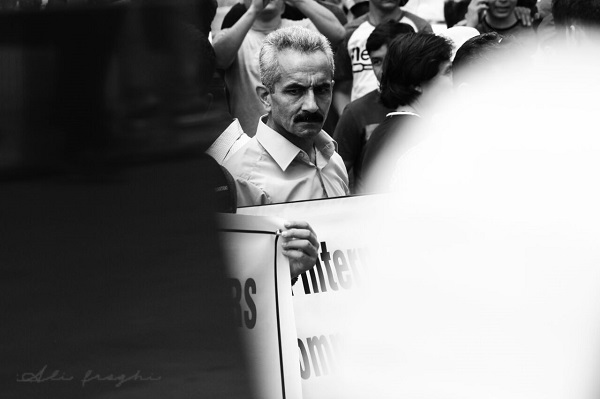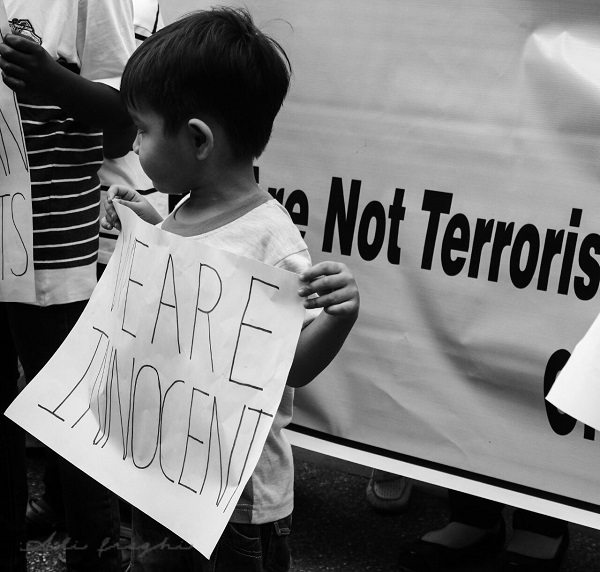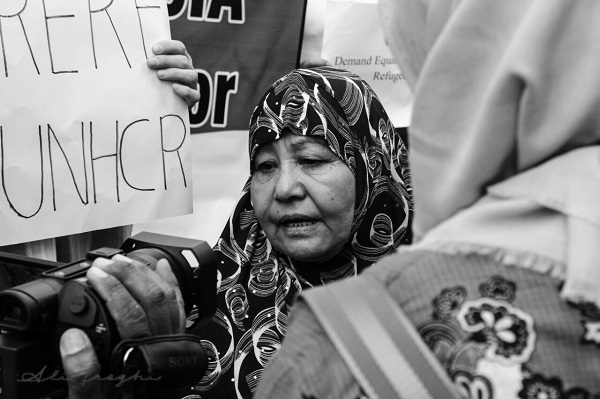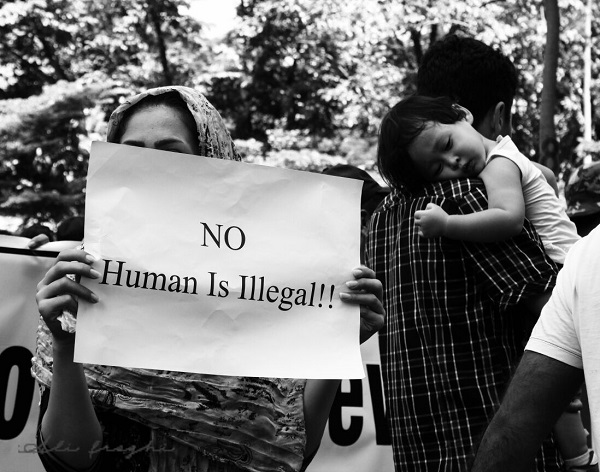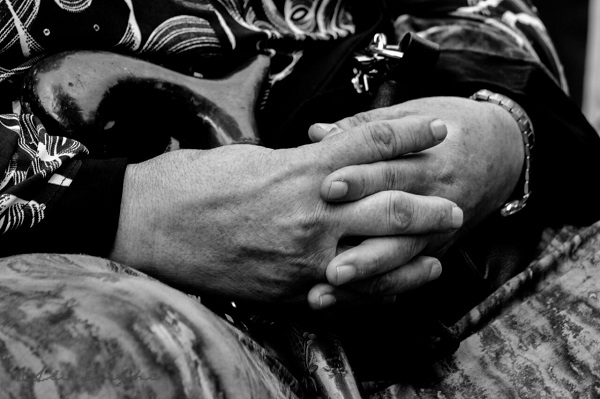Ali Froghi
On 21 February hundreds of asylum seekers and refugees staged a demonstration in front of the United Nations office in Makassar, South Sulawesi. They were protesting against their lack of protection from the arbitrary policing of local immigration authorities. It was the first of two demonstrations against a sudden increase in heavy policing that occurred when a new head of immigration detention took office earlier this year.
In the photo essay below, Ali Froghi, a Hazara refugee from Afghanistan, attempts to capture the suffering of refugees as they await resettlement in a third country. Froghi is one of approximately 2000 refugees living in Makassar out of a total of over 14,000 across the Indonesian archipelago. During this time, they are not allowed to work and have very limited access to education and other resources.
In July 2018, it will be five years since Froghi arrived in Indonesia seeking asylum. As the months turn into years, waiting for hope becomes a matter of survival.
-----
That day, I woke up at 3.30am to watch football. I went to knock on my friend’s door because he has a big TV. But I saw that the light was off and started watching the game on my own phone.
The night before, I had charged my camera. I had called a friend to ask whether I could borrow his camera because I wanted to use his wide-angle lens. I had learnt photography from him. But he said that someone else was using it. So I decided to use my secondhand Canon 1200D that I got just last September.
It was at half time when I suddenly remembered that I had forgotten to empty my memory cards. I don't have my own laptop for saving my photos. I wanted to borrow my friend’s but he was asleep. I worried that he would not wake up in time and I wouldn’t be able to take any photographs because the card was full. Luckily, after 20 minutes my friend texted me. I went to his room in our dorm. I was relieved.
Then I continued watching the game on his big screen TV. It was tense. A single mistake would result in a goal. Barcelona versus Chelsea. The game ends: 1-1.
I came back to my room at around 5am. I checked my camera cards and settings. I put some water on the gas stove to make a cup of ready-mix cappuccino.
I made the coffee. Then I sat outside my room watching the stars while drinking my coffee. There were lots of stars – bintang – shining. I like watching stars and counting them at night. Most of the time, when I am lonely, I will sit outside listening to classical music and keep watching the stars. That morning I was stressed about how it would be later on at the demonstrations. It was challenging for me to capture the pain. I was thinking about the camera angle and the lighting, and whether or not it would rain.
I finished the coffee around a quarter to six. Around 7am I ordered a Grab bike (motorbike taxi) and headed for the site of the UN office in Makassar. It was very macet (traffic jammed). I arrived at 8am. I was thinking about which ISO setting to use.
The peaceful demonstrations started. I made sure both lenses were ready – open. I put the wide-angle lens on the camera, and the 75-300mm lens in the bag. I was ready. I started shooting with a single point focus in colour mode for 10 minutes or so. But I didn’t get what I had imagined.
So I changed the settings to black and white. Raised the ISO and contrast and sharpness. I switched to the 75-300mm lens. I focused on single subjects who did not notice me taking their photographs. I took photos without stopping to tell them that I was taking their photographs. I kept walking to look for subjects.
I was walking around when I noticed the elderly woman talking to the media. She was saying, ‘I have pain all over my body. I can’t walk and it’s a very sad moment for me’. She spoke in Farsi (Persian) and someone translated for her into Bahasa Indonesia. The way she was holding her arms and hands, it struck me. So I started taking around seven to eight frames while changing the settings.
I made my eyes ‘black and white,’ looking for good moments to capture. In black and white, the contrast and sharpness of the composition is high. After each new photo, another idea would come to me. I also took some portraits of friends.
The demonstrations then ended. People were cleaning the area. I helped for some minutes. And then I went home with a friend of mine who I call ‘brother’.
At home, I borrowed my friend’s computer and started selecting the photographs, which I posted in the refugee group chat. Then they posted it to you. The selection process took a long time. Then I slept for two hours.
There is only one reason why I did this – to show the pain through my photos.
To show the hopeless eyes and faces.
To show the black and white image of our inside.
To show that we are just alive, not living.
All images credit: Ali Froghi
